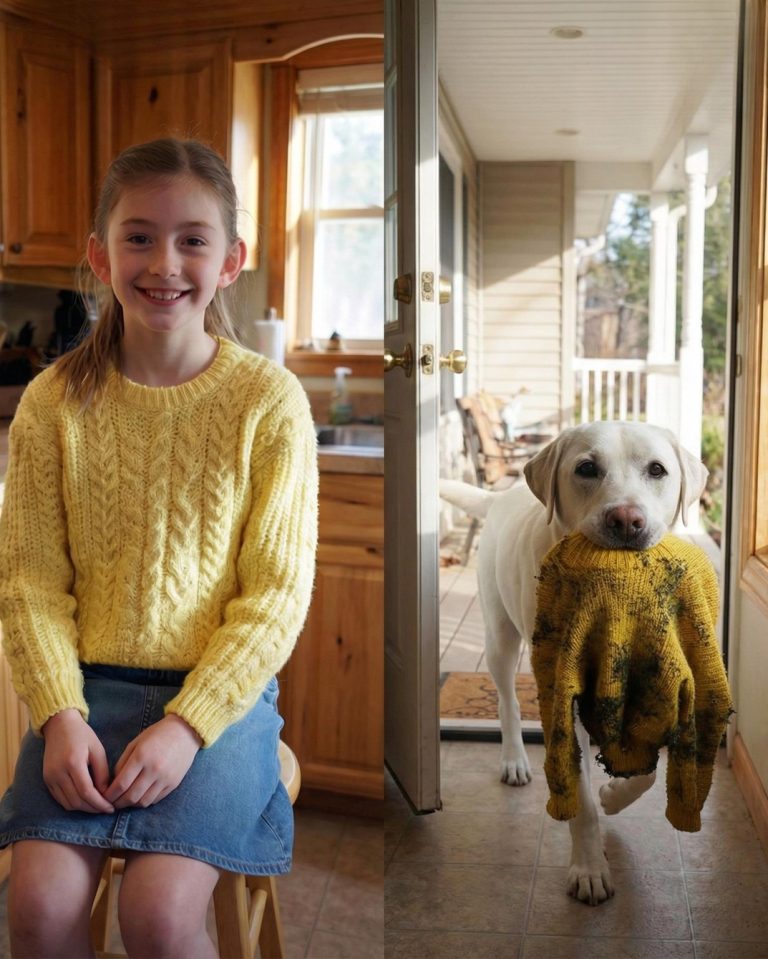
My sister-in-law, Vanessa, inherited this old, faded, cracked dark oak armoire from her grandma (also my husband’s grandma). One day, she called me out of nowhere:
“Ugh. I can’t stand this hunk of junk. Makes my new house look cheap. I’m sending it to you. You pay delivery. Do whatever you want with it. I never want to see it again.”
I even double-checked:
“Do you mind if I paint it?”
She waved me off:
“Do whatever. I’m done with it.”
So I sanded it by hand. Replaced every bit of hardware. Painted it a gorgeous cream, then hand-painted flowers and butterflies. I put in close to $1,000 and countless hours. When I was done, it looked like a $5,000 boutique hotel piece.
Fast-forward to my husband’s birthday. Vanessa walked in, spotted it, jaw dropped. Then she said:
“Give it back. It’s mine. How could you take what my grandma left me? This is an heirloom!”
I almost laughed. She’d called it junk. Made me pay to move it. And now it’s “priceless”?
She whined that I was selfish.
At first, I wanted to say no. But I knew she’d pull a stunt. I knew I needed to teach her a lesson.
So I smiled and said,
“Of course… you can have it back. But on one condition.”
Her eyes lit up with fake gratitude.
“Anything!” she chirped.
“What is it? Money? A trade?”
I smiled sweetly.
“No, no. Nothing like that. I just want it in writing—from you—that you’re taking back full ownership of the original piece. As-is. That means you’re also taking responsibility for the cost of all modifications made—including labor, materials, and transport. I’ll itemize it all in an invoice. It comes to about $3,800. Fair, right?”
Her smile cracked.
“Wait, what? You want me to pay you for fixing it?”
“Not fixing. Transforming. You said I could do whatever I wanted. I invested time and money. So if you want it, you pay me back. Or…” I leaned in slightly, “you admit you gave it to me, and it stays right here.”
Vanessa’s jaw clenched.
She looked between me and the armoire—beautiful, shining, elegant. She couldn’t stand that it was no longer hers… but she really couldn’t stomach paying for it.
She scoffed,
“You’re so manipulative.”
I simply shrugged.
“No, just a woman of my word. You said you never wanted to see it again. I’m just honoring your wishes.”
Vanessa stormed out of the house, furious.
My husband later told me she tried to badmouth me to the rest of the family, but they’d all heard her call it “junk” just months before. No one took her side.
Now? The armoire sits proudly in my hallway. It’s the centerpiece of the whole house.
Sometimes, I catch guests admiring it—and I always smile and say:
“Funny story about that piece…”
Months passed, and the armoire became somewhat of a legend in our social circle. Friends would ask about it, guests would compliment it, and even a few local boutique designers asked if I’d consider selling it.
One afternoon, I received a message on Instagram from a local home décor magazine.
They were doing a feature on “Upcycled Elegance” and wanted to photograph the armoire and interview me about the process.
Of course, I said yes.
The article went viral. Apparently, people love a good “trash-to-treasure” story—especially when it involves a little family drama.
A week later, Vanessa posted a cryptic Facebook status:
“It hurts when something that belonged to your family gets taken and paraded around like someone else’s accomplishment.”
Cue the dramatic sighs and vague sympathy from a few of her friends who didn’t know the full story.
But then something really wild happened.
An antique appraiser reached out after seeing the article. He specialized in heirlooms and had known Vanessa’s grandmother. He emailed me, saying:
“This armoire actually has a unique stamp on the inside of the bottom drawer. It’s from a rare line made by a French craftsman in the 1800s. If it’s authentic, it could be worth up to $25,000, even with the modifications.”
I nearly dropped my phone.
When I checked the drawer, sure enough—there it was. The mark was faint, but it was there.
I had it appraised in person. Final value? $27,300.
Not only had Vanessa thrown away something valuable—she’d practically gifted me an inheritance because she couldn’t see past a little dust and chipped wood.
When word got out, Vanessa tried again.
This time, she sent a formal letter—through a lawyer—claiming I had “unfairly profited” from her grandmother’s property.
I passed it straight to my own lawyer, along with:
- A copy of her original text messages,
- A signed delivery receipt with her name on it,
- Screenshots of her telling me I could “do whatever” with the armoire.
My lawyer sent back a polite but firm response.
“Your client gifted the item in writing, rejected all ownership, and relinquished all claim upon delivery. Case closed.”
That was the last I heard from her.
Well, almost.
A few weeks later, I got a card in the mail. No return address. Just one sentence inside:
“Must be nice to steal your way into success.”
I didn’t reply.
But I did frame the card and hang it inside the armoire—right above the hidden appraiser’s certificate.
Because sometimes, karma needs a spotlight.



